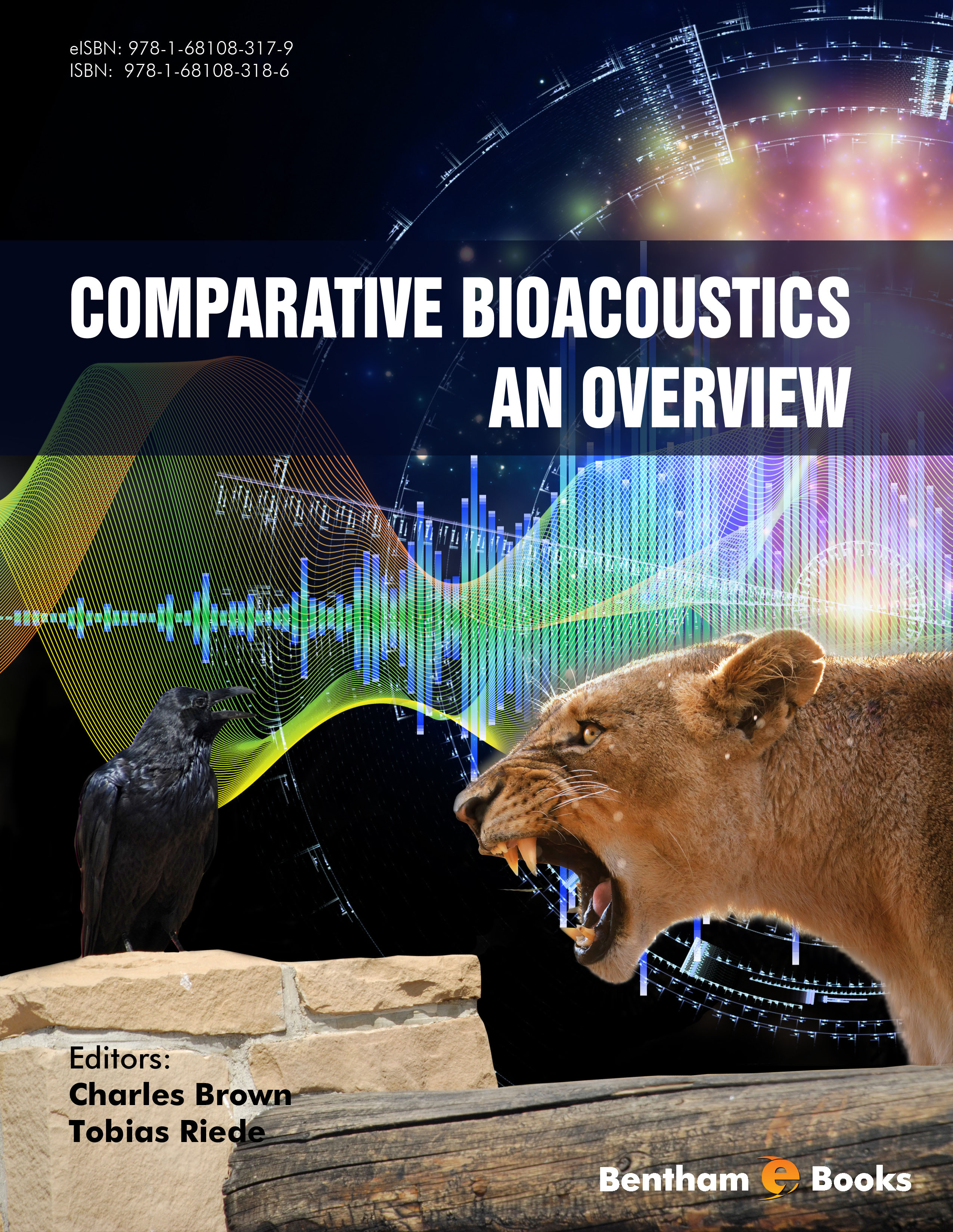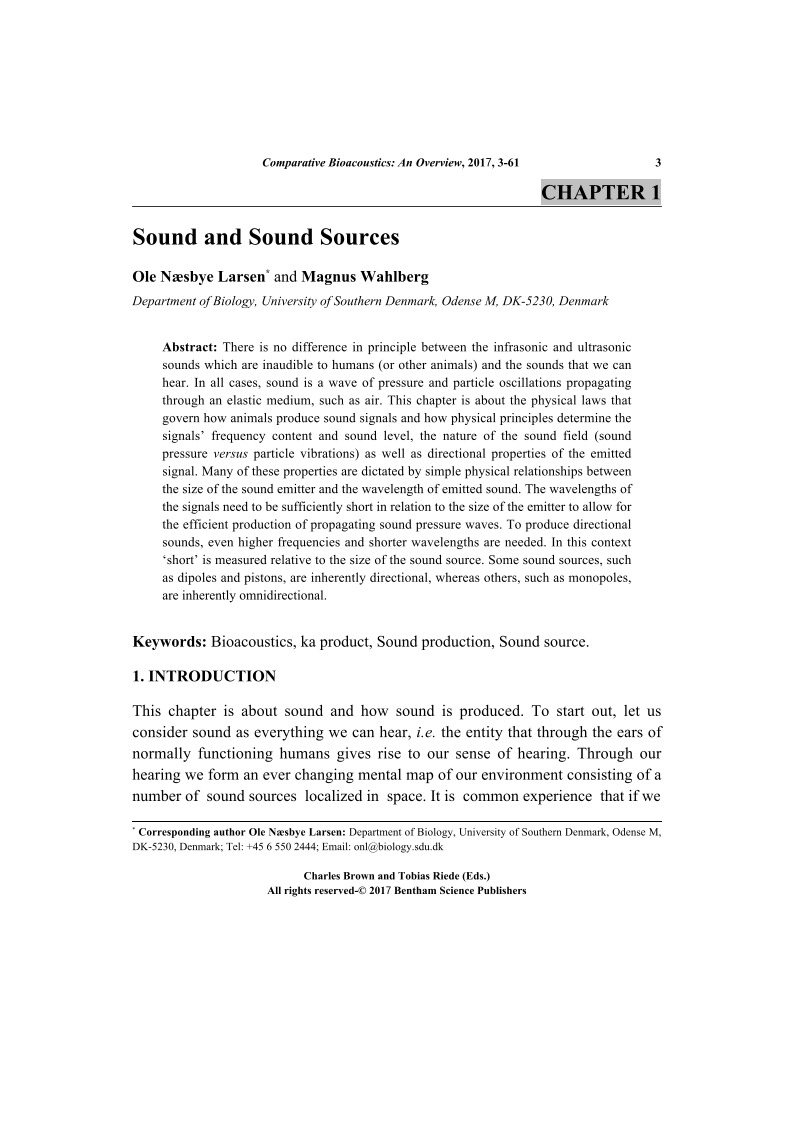Sound and Sound Sources

- Authors: Ole Næsbye Larsen1, Magnus Wahlberg2
-
View Affiliations Hide Affiliations1 Department of Biology, University of Southern Denmark, Odense M, DK-5230, Denmark 2 Department of Biology, University of Southern Denmark, Odense M, DK-5230, Denmark
- Source: Comparative Bioacoustics: An Overview , pp 3-61
- Publication Date: January 2017
- Language: English
Sound and Sound Sources, Page 1 of 1
< Previous page | Next page > /docserver/preview/fulltext/9781681083179/chapter-1-1.gif
There is no difference in principle between the infrasonic and ultrasonic sounds which are inaudible to humans (or other animals) and the sounds that we can hear. In all cases, sound is a wave of pressure and particle oscillations propagating through an elastic medium, such as air. This chapter is about the physical laws that govern how animals produce sound signals and how physical principles determine the signals' frequency content and sound level, the nature of the sound field (sound pressure versus particle vibrations) as well as directional properties of the emitted signal. Many of these properties are dictated by simple physical relationships between the size of the sound emitter and the wavelength of emitted sound. The wavelengths of the signals need to be sufficiently short in relation to the size of the emitter to allow for the efficient production of propagating sound pressure waves. To produce directional sounds, even higher frequencies and shorter wavelengths are needed. In this context short' is measured relative to the size of the sound source. Some sound sources, such as dipoles and pistons, are inherently directional, whereas others, such as monopoles, are inherently omnidirectional.
-
From This Site
/content/books/9781681083179.chapter-1dcterms_subject,pub_keyword-contentType:Journal -contentType:Figure -contentType:Table -contentType:SupplementaryData105

